#temperate rainforest
Text
#good news#science#environmentalism#nature#environment#conservation#restoration#britain#devon#rainforests#temperate rainforest
370 notes
·
View notes
Text
It is a rocky, stormy, and wild coast, one that everywhere reveals nature at its most spectacular. There are the redwood groves of Northern California, the raging rivers of Southern Oregon, the Rogue Basin, and the Umpqua forest. There is the mouth of the Columbia River, with its huge waves and foaming breakers, where ocean currents and tides collide with the deadly bars. In Washington State, there are the breathtaking sea stacks of the Olympic National Park, the Hoh River, and Quinault River valleys. Also in the park are towering fir, cedar, and spruce trees draped in ghostly mosses. Then comes an inland sea, the Salish Sea, shared by Washington and British Columbia, where snow-laden mountains — the ten-thousand-foot Mt Baker and the eight-thousand-foot Mt Olympus — shelter idyllic islands whose waters are home to the last of the southern orcas.
#old growth forest#temperate rainforest#tongass national forest#redwoods#west coast#b.c.#california#oregon#alaska
328 notes
·
View notes
Text
"Two so-called “Celtic rainforests” in the UK are to be restored with a mixture of native planting and natural reforestation.
The hope is that they will provide rich habitats for dozens of species, improve groundwater quality and flood prevention, and allow residents and tourists to experience an exceptionally rare forest biome called temperate rainforest.
The most famous and largest temperate rainforests on Earth are found in the US states of Oregon and Washington, along Brazil’s Atlantic coast (known as the Atlantic Forest), and on New Zealand.
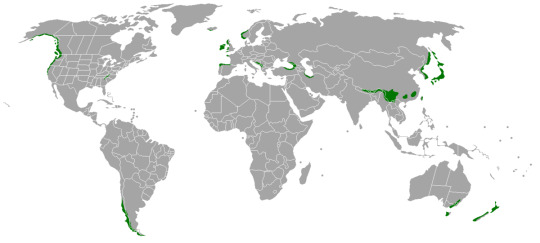
Pictured: Map of the global distribution of temperate rainforests. Source: Wikipedia
Britain, especially Wales, would have featured a certain amount of these Celtic rainforests in areas that experience high moisture content coming off the ocean, and low variations in annual temperatures.
One such place is Creg y Cowin on the Isle of Man, where 28 hectares (70 acres) of native Celtic rainforest will be planted by hand, and another 8 hectares (20 acres) left to regenerate naturally.
The Manx Wildlife Trust will be responsible for the project, and it anticipates “the return of oakwood dwellers such as wood warbler, pied flycatcher, and redstart, as well as raptors, owls, and woodland invertebrates.”
Historic agricultural dwellings called “tholtans” will be left on the landscape for their historical and cultural significance.
Elsewhere, in Gwynedd, North Wales, another 40 hectares (112 acres) of Celtic rainforest will be raised via a mixture of native planting and regeneration. The selected site is the peak and slopes of Bwlch Mawr, near the university town of Byrn Mawr.
“There’s real momentum now to restore and expand our amazing temperate rainforests, and it’s brilliant to see the Wildlife Trusts advancing their plans,” Guy Shrubsole, environmental campaigner and author of The Lost Rainforests of Britain, told the Guardian in the wake of the announcements."
-via Good News Network, 4/7/23
#uk#united kindgom#england#wales#gwynedd#rainforest#forest#temperate rainforest#rewilding#celtic#ecosystem#good news#hope
570 notes
·
View notes
Text
Temperate rainforest, also known as Atlantic woodland or Celtic rainforest, once covered most of western Britain and Ireland. The archipelago’s wet, mild conditions are ideal for lichens, mosses and liverworts. But centuries of destruction have meant that only small, isolated pockets remain.
In England, just 189 sq km (46,624 acres) survive from the ecosystem that once stretched from Cornwall to the west of Scotland, and these remain threatened by overgrazing from sheep, invasive species and nitrogen pollution.
After three years of campaigning, the government published the strategy at the end of November to protect and recover England’s temperate rainforests, and committed £750,000 for research and development.
The strategy includes a commitment to protect and restore the internationally rare ecosystems and use public-private partnerships to help fund their conservation. There is also a pledge to reduce pressure from grazing by deer, which is one of the main factors preventing forests’ recovery. The government says it will work with farmers and landowners to protect areas of temperate rainforests on their land.
62 notes
·
View notes
Text




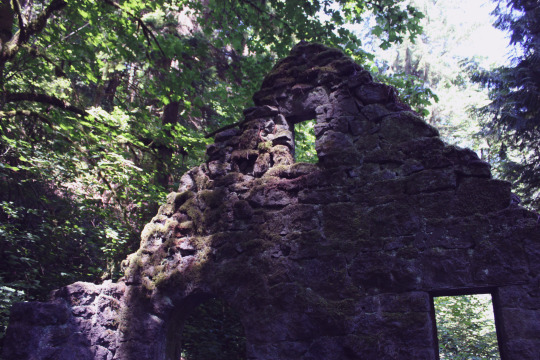
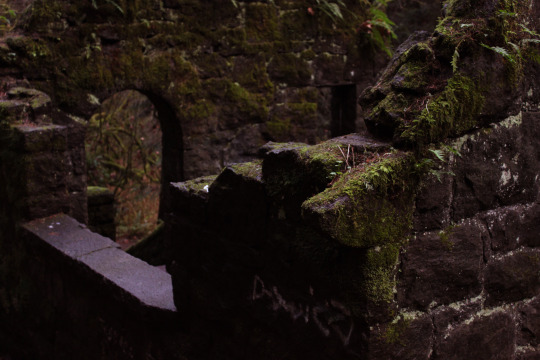

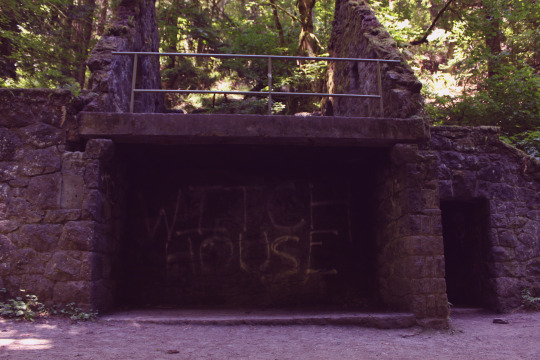
witch house
pdx 2014
#witch house#witch house pdx#portland#oregon#pacific northwest#pdx#pnw#rainforest#temperate rainforest#photographers on tumblr#autumn#fall#summer#2014#pacific northwestern gothic#pacific northwestern noir#pacific northwest noir#pacific northwest gothic
119 notes
·
View notes
Text

Nimpkish River, BC
#forest#nature#canada#trees#hiking#water#british columbia#rocks#river#landscape photography#vancouverisland#temperate rainforest#nature reference#nature photography#photography#desktopwallpaper#desktop
56 notes
·
View notes
Photo

Back in the Quinault
#quinault rainforest#olympic national park#pnw#washington state#old growth forest#rorests#forest aesthetic#temperate rainforest
855 notes
·
View notes
Text

Coho Salmon / Silver Salmon - Oncorhynchus kisutch
Scale Pattern, 07/10/2023
#personal#photography#nature#nature photography#alaska#temperate rainforest#naturecore#southeast alaska#ketchikan#island living#watercore#silver salmon#coho salmon#Oncorhynchus kisutch#sea punk#fish scales#scale pattern#silver#ocean#pacific northwest#pacnw#alaskan wildlife#my photgraphy#sea life#salmon#summer#2023
99 notes
·
View notes
Text

Ballinastoe Woods, Wicklow
It's a scenic wood, perhaps inhabitated by mythological creatures but never a spooky place.
Moss on the trees, soft needle floor and soft sidelighting.
Enchanted, for sure.
#ireland#vsco#landscape#vscocam#irish#photographers on tumblr#photography#travel#nature#panoramic ireland#woodlands#walking in the woods#wicklow#photographers of tumblr#mossy woods#temperate rainforest#irish scenery
41 notes
·
View notes
Text
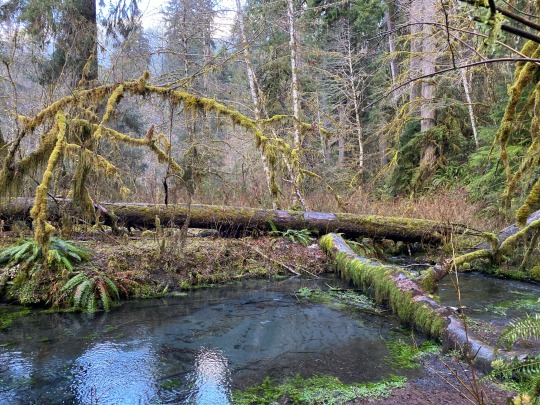



Temperate rainforests are cool as fuck
143 notes
·
View notes
Photo

The beautiful valley of Warren Wood. A temperate rainforest nestled in the welsh mountains full of mosses, lichens and ferns
#alexmurison#wales#waterfall#long exposure#rainforest#temperate rainforest#moss#fern#flora#fauna#wildlife#nature#landscape photography#photographers on tumblr#original photography#uk#travel#great britain#get outside#walk#walking#hike#hiking#adventure#explore#explore more#never stop exploring#explore to create#wander#wanderlust
115 notes
·
View notes
Text
Each acre in the Grove of Titans, a patch of redwoods in California’s Jedediah Smith State Park, stores six times more carbon than the same area in the Amazon, Koberstein and Applegate write. An ancient tree like the Queets Fir, a 221-foot-tall Douglas fir in Olympic National Park, can sequester as much carbon in a year as a midsized tree captures over its entire life, according to a USGS study. The authors use evidence like this to advance the idea that protecting old-growth forests is better for the climate than planting new trees.
Surprisingly, in Southeast Alaska, up to 70 percent of logged trees are left to rot due to imperfections that don’t sell well in the timber market, the authors write. But once a tree is cut down, the organic material starts decomposing, releasing the tree’s carbon into the atmosphere. In many regions, logging companies replace felled trees with tree farms, which are young trees planted densely in rows. While the companies call these forests, scientists interviewed by the authors doubt they can really be called forests: “They have more in common with cornfields,” they write, and sequester just one-fortieth the amount of carbon as a natural forest.
Koberstein and Applegate chronicle the efforts of both small timber companies and large ones, including Weyerhaeuser, the third-largest logger in the world and owner of the largest private tract of land in Oregon’s Coast Range. They also focus attention on industry associations, like the Oregon Forest and Industry Council, which they accuse of using the same tactics as tobacco and oil companies to spread misinformation about the impacts of deforestation.
The authors assert that there are logging methods that can ensure that carbon is sequestered while also harvesting timber. Proforestation, for example, prioritizes the protection of existing old-growth forests and ones that are soon maturing into old-growth, while delaying harvesting in younger forests.
36 notes
·
View notes
Text
various fungus and forest pics I took from today not including the bear I ran into but I’m good
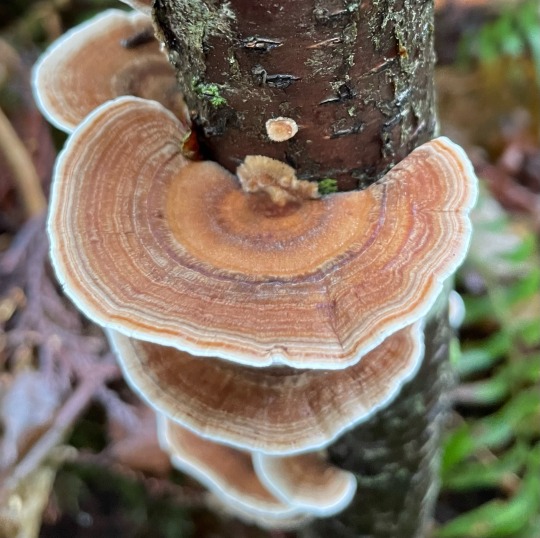
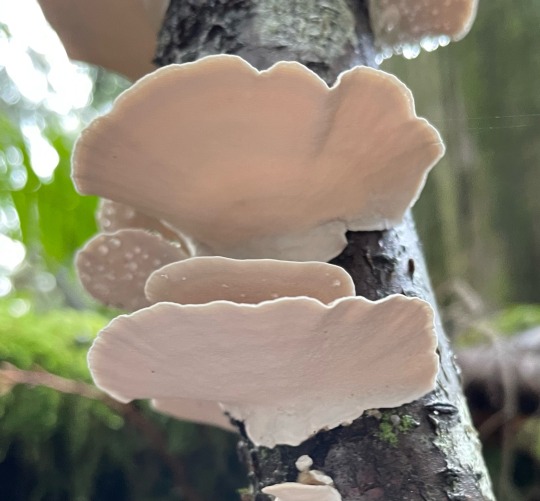
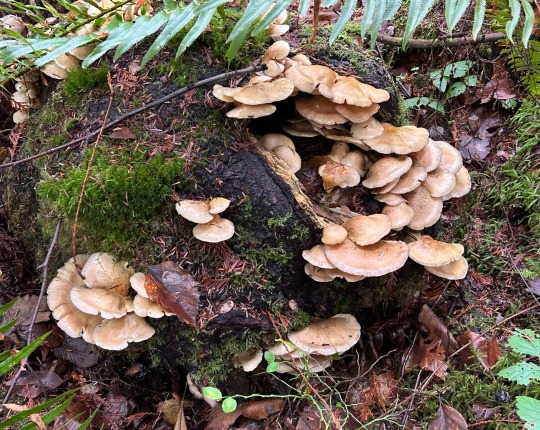


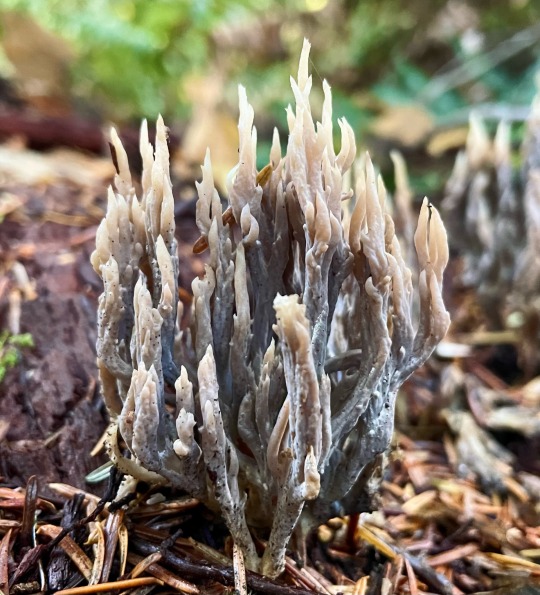
13/12/23
#yes I carry bear spray when I hike#my pics#trametes#polypores#oyster mushroom#coral fungus#mycology#fungi#pnw#goblincore#temperate rainforest
19 notes
·
View notes
Text

this is where i need to be rn
#aesthetic#nature#photography#green aesthetic#green#forest#foggy aesthetic#green forest#moodyweather#temperate rainforest#rainyweather#trees and forests#mosscore#mossy rocks#moss covered rocks#moss covered#mossy trees#moss aesthetic#mossy woods#moss#cabincore#forest cottage#forest cabin
318 notes
·
View notes
Text
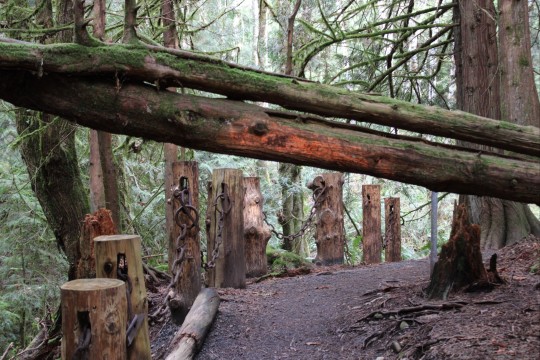
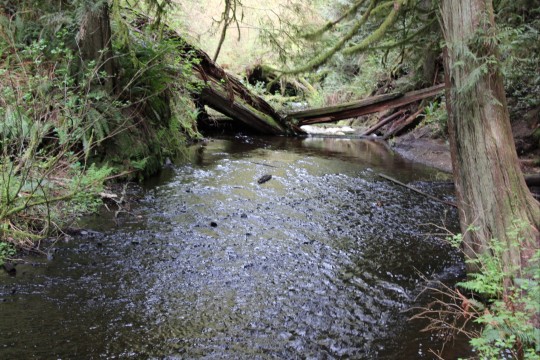
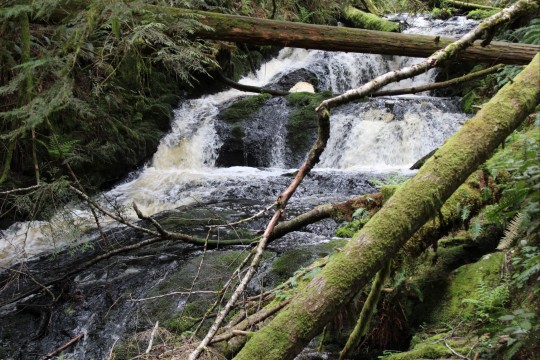
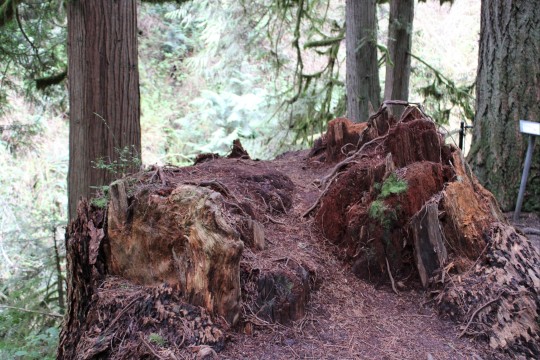


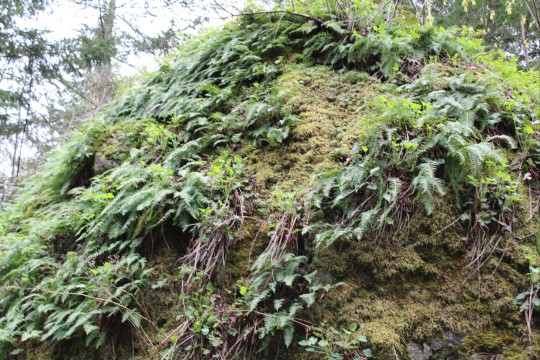
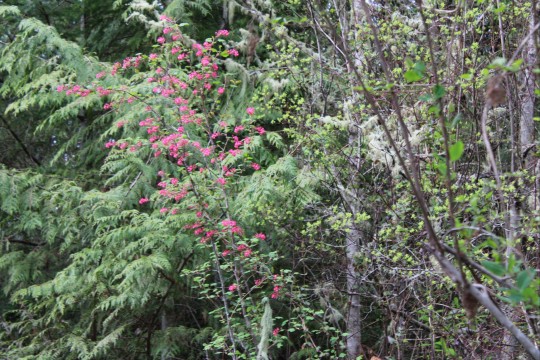
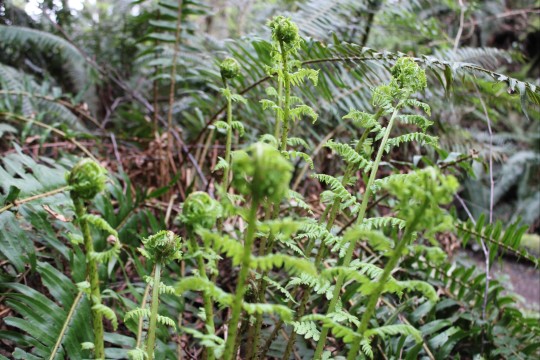

Went to the peninsula this weekend. So here's some photos from that trip for everyone looking for some temperate rainforest or just forest in general vibes.
9 notes
·
View notes
Text
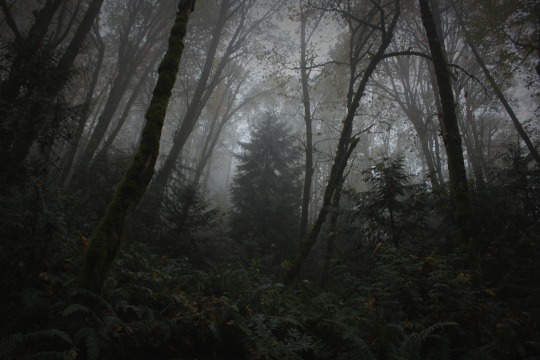
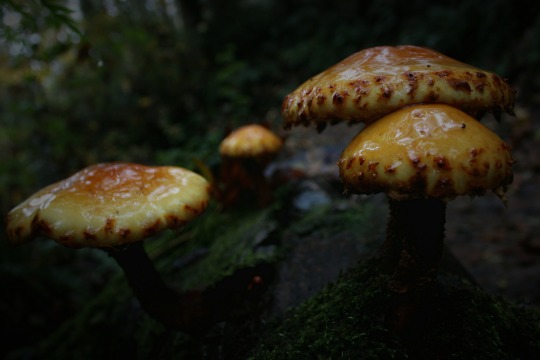

forest park, pdx
december 2014
#forest park pdx#forest park portland#pdx#pnw#pacific northwest#portland#oregon#rainforest#temperate rainforest#winter#december#2014
112 notes
·
View notes